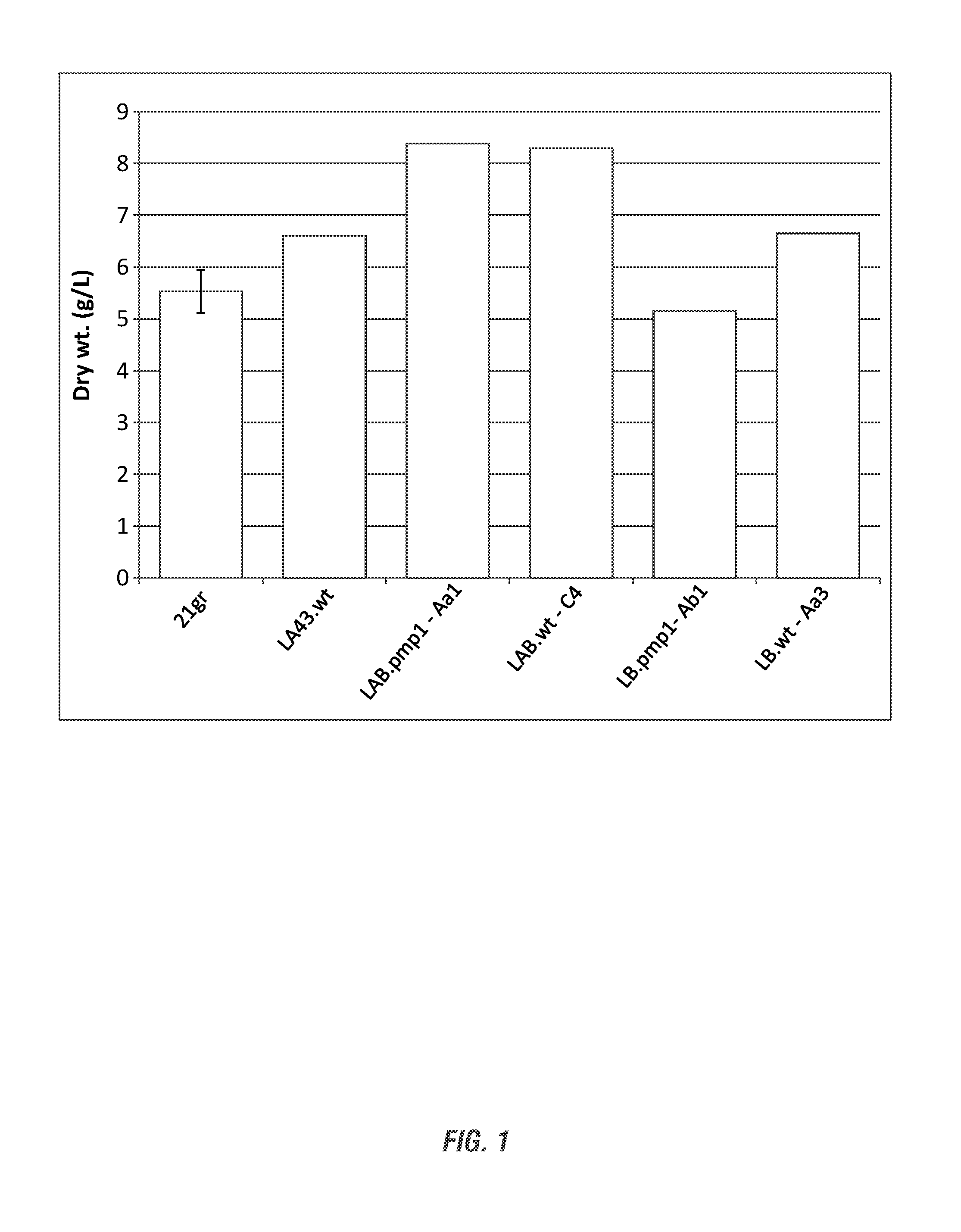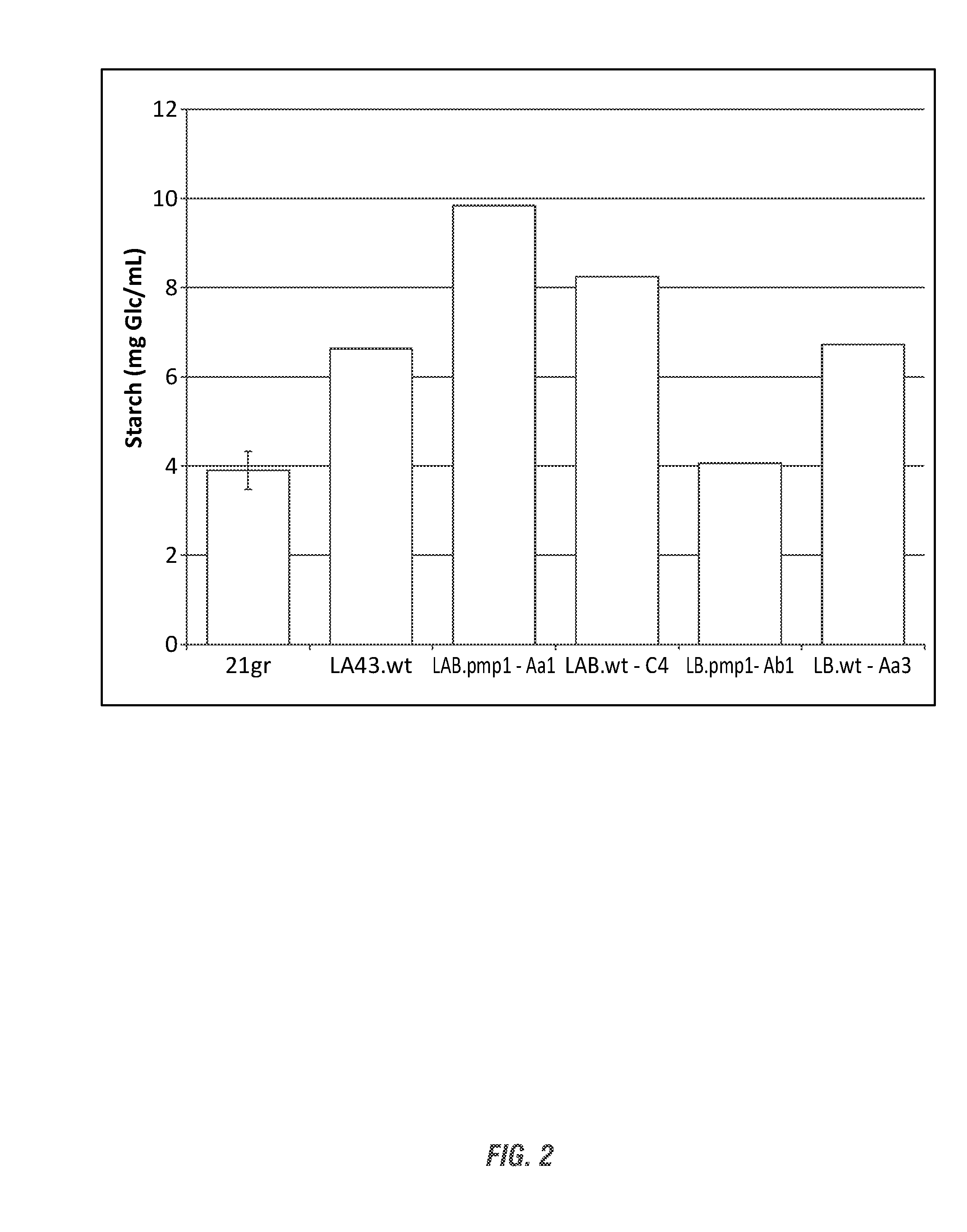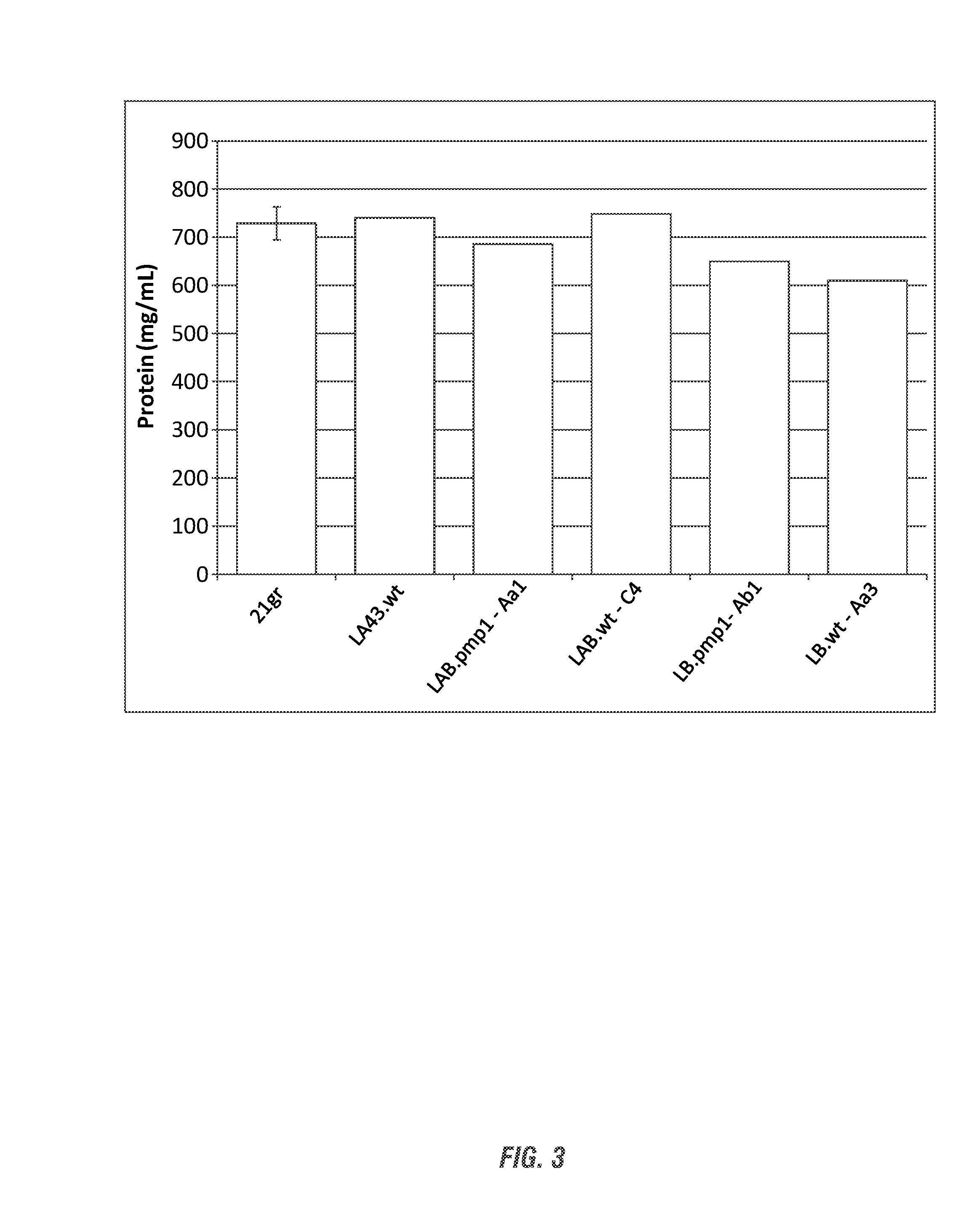Modulation of low carbon dioxide inducible proteins (LCI) for increased biomass production and photosynthesis
a low carbon dioxide and inducible protein technology, applied in the field of molecular biology, can solve the problems that eukaryotic algae have not been well characterized by ci-specific transporters, and achieve the effects of increasing the activity of ccm, increasing biomass production, photosynthesis and growth
- Summary
- Abstract
- Description
- Claims
- Application Information
AI Technical Summary
Benefits of technology
Problems solved by technology
Method used
Image
Examples
example 1
[0190]Methodology used herein can generally be found in Wang, et. al, PNAS Jun. 27, 2006 vol. 103, no. 25; pages 10110-10115, “An Inorganic Carbon Transport System Responsible for Acclimation Specific to Air Levels of CO2 in Chlamydomonas reinhardtii” which is hereby expressly incorporated by reference in its entirety particularly pages 10114-10115 and FIG. 5 in the Materials and Methods section.
[0191]FIG. 1. A transgenic Chlamydomonas lcib mutant line expressing an inserted lcib gene regulated by a high expression, constitutive promoter was crossed with a transgenic Chlamydomonas line expressing an inserted LCIA gene regulated by a high expression, constitutive promoter. Progeny from this cross with different genotypes, including the LCIA transgene in a WT background (LA43.wt), the LCIB transgene in a WT background (LB.wt-Aa3), the LCIB transgene in an lcib mutant background (LB.pmp-Ab1), the LCIA and LCIB transgenes both in a WT background (LAB.wt-C4) and the LCIA and LCIB transge...
example 2
[0200]A transgenic Chlamydomonas lcib mutant line expressing an inserted LCIB gene regulated by a high expression, constitutive promoter was crossed with a transgenic Chlamydomonas line expressing an inserted LCIA gene regulated by a high expression, constitutive promoter. Progeny from this cross with different genotypes, including the LCIA transgene in a WT background (LA43.wt), the LCIB transgene in a WT background (LB.wt-Aa3), the LCIB transgene in an lcib mutant background (LB.pmp-Ab1), the LCIA and LCIB transgenes both in a WT background (LAB.wt-C4) and the LCIA and LCIB transgenes both in an lcib mutant background (LAB.pmp1-Aa1), were grown along with WT (21gr) in 200 ml photobioreactors to stationary phase, then harvested by centrifugation and the cell pellets dried for biomass determination. The results are shown in FIG. 10.
REFERENCES
All are Hereby Incorporated in their Entirety Herein by Reference
[0201]1. Spalding M. H. In: the Molecular Biology of Chloroplasts and Mitochon...
example 3
[0231]For overexpression of lcib in Chlamydomonas, the coding region of LCIB gene was amplified by PCR from the genomic DNA and fused with a promoter amplified from the plasmid PSI103delta carrying the hsp70 enhancer element and RbcS2 promoter (Sizova et al., 2001). The final constructs includes the hsp70 promoter region (enhancer), the RbcS2 promoter, an RbcS2 intron, LCIB gene and the 3′-untranslated region.
[0232]The LCIB overexpression construct was introduced into the lcib mutant pmp-1-16-5K (Spalding et al., 1983) by electroporation. After the transformation, the putative transformants were initially screened by their growth in low CO2 (350-400 ppm), and then the incorporation of the overexpression cassette into the genome in the putative transformants was confirmed by PCR. The lcib protein in the overexpression lines was analyzed by immunoblotting with antibodies against LCIB.
[0233]For overexpression of LCIA, the promoter region from the plasmid PSI103delta carrying the hsp70 ...
PUM
| Property | Measurement | Unit |
|---|---|---|
| Fraction | aaaaa | aaaaa |
| Protein activity | aaaaa | aaaaa |
Abstract
Description
Claims
Application Information
 Login to View More
Login to View More - R&D
- Intellectual Property
- Life Sciences
- Materials
- Tech Scout
- Unparalleled Data Quality
- Higher Quality Content
- 60% Fewer Hallucinations
Browse by: Latest US Patents, China's latest patents, Technical Efficacy Thesaurus, Application Domain, Technology Topic, Popular Technical Reports.
© 2025 PatSnap. All rights reserved.Legal|Privacy policy|Modern Slavery Act Transparency Statement|Sitemap|About US| Contact US: help@patsnap.com



